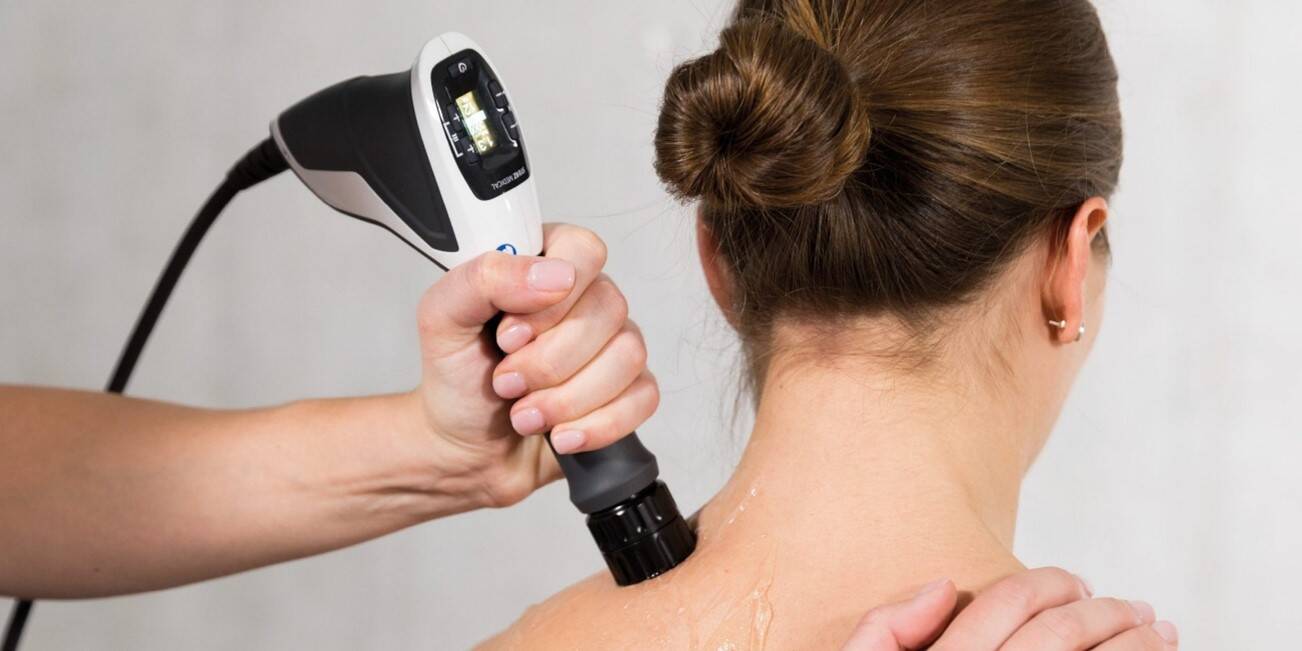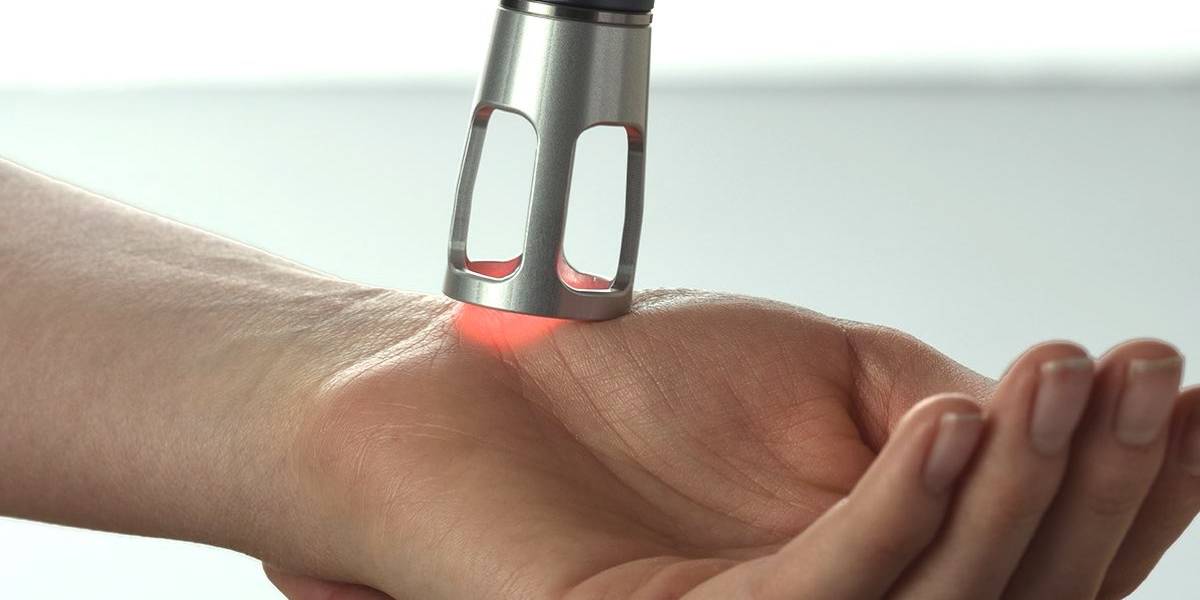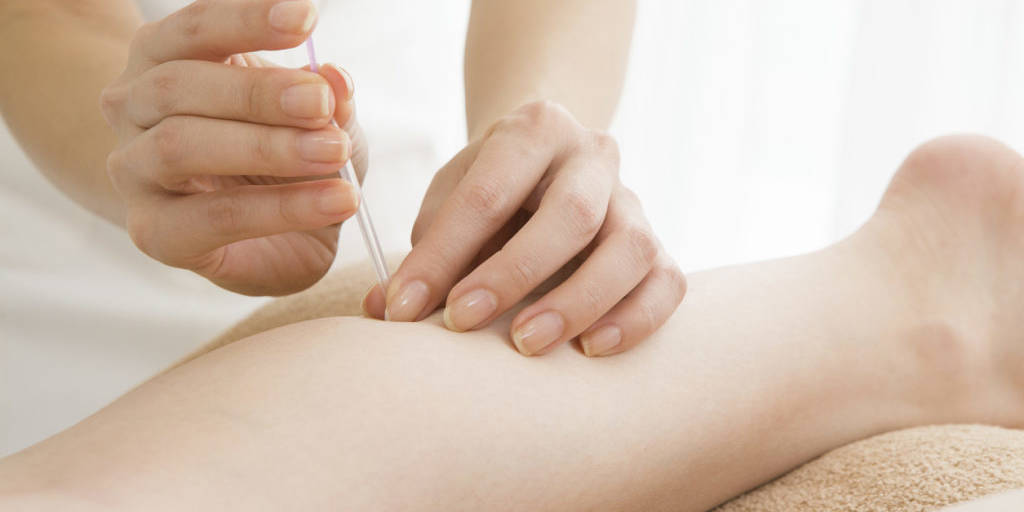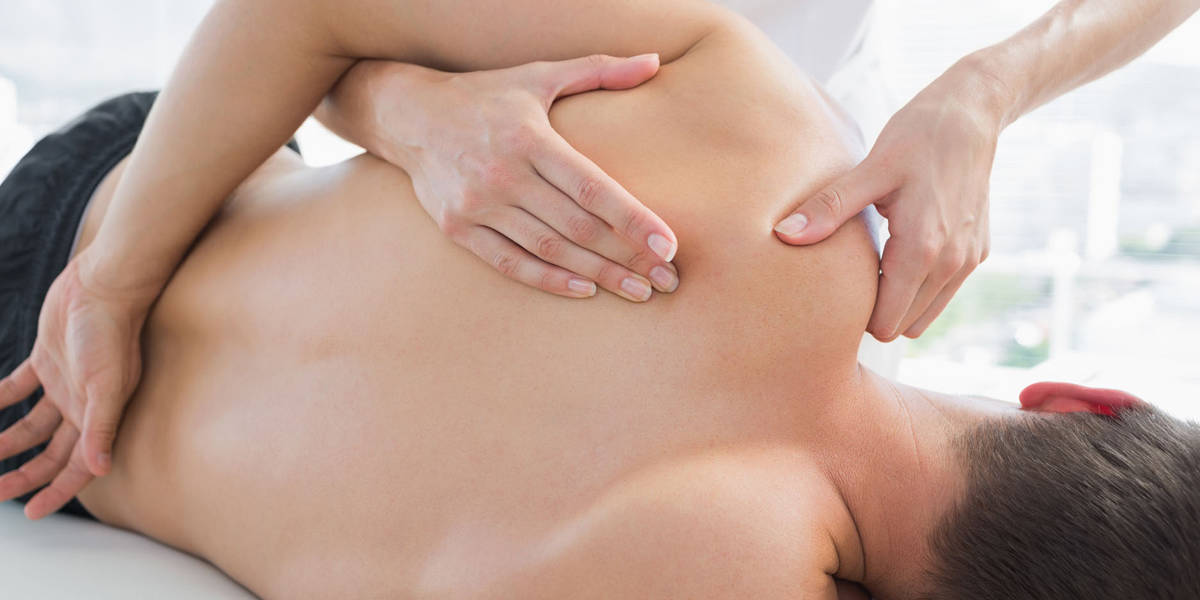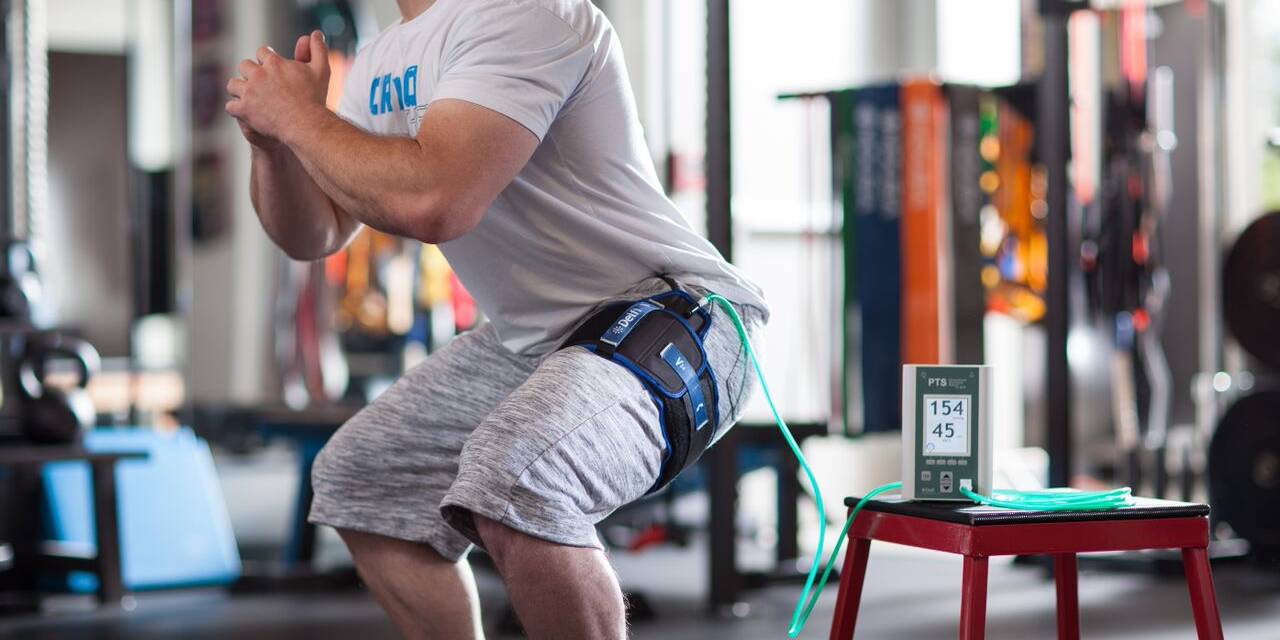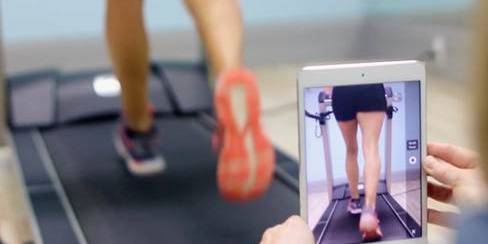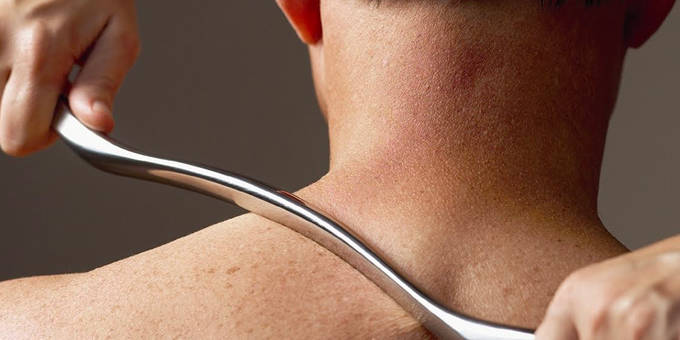Physical Therapy for Tennis Elbow in Washington, D.C.
PT Services for Tennis Elbow
What is Tennis Elbow?
Tennis elbow, medically known as lateral epicondylitis, is a condition characterized by swelling and inflammation in the tendons of your elbow. Tendons are what connect muscle to bone and can become painfully inflamed when subjected to stress or overuse, which causes micro-tears and damage to the tendon’s tissue. Tennis elbow pain is often felt as an aching or burning pain along the outside of the elbow and forearm that, in severe cases, can extend all the way toward the wrist. Other symptoms include weak grip strength, pain when lifting even very light objects, and inability to raise your hand against resistance without pain.

What causes Tennis Elbow?
Despite its name, tennis elbow is not exclusively caused by playing tennis. The reason tennis players often suffer from tennis elbow is that this type of injury is common in anyone who engages in an activity with repeated movement in the area. This could include hobbies such as playing pickleball, cooking, working out, or gardening. The condition also often afflicts people in careers requiring similarly repetitive movements such as dentists, carpenters, massage therapists, or even professionals who work at home or at their computers for extended periods of time.
Tennis elbow developing from these repetitive activities can often be attributed to improper form or weakness in the surrounding muscle groups (such as wrist and shoulder). At your intake session at Release, we conduct a full assessment of your strength, stability, and range of motion to identify the root cause of the dynamic causing you pain so that our therapies not only relieve your pain but prevent future relapse and reinjury.
Can physical therapy help with Tennis Elbow?
Of course! Physical therapy for tennis elbow can help accelerate the healing process and provide exercises to prevent further injury and assist with pain management. Tendons, which are the driver of tennis elbow pain, do not naturally receive as much blood as other tissues in the body and heal quite slowly as a result. Improving blood flow to damaged tendons allows nutrients essential to healing to be delivered to the tissue and thus accelerates the healing process. Therapeutic medical massage is the most common way to promote blood flow to the injured area, but for many patients, an additional technique is needed for addressing chronic pain from tennis elbow and accelerating their healing and recovery process. Release Physical Therapy is unique in the Washington, D.C. area for our wide selection of evidence-based specialized treatments such as shockwave therapy, dry needling, laser therapy, and Graston technique manual therapy.
All of our therapies are targeted to assist the body in repairing itself at different stages of the healing process. Shockwave therapy for tennis elbow stimulates blood flow to the damaged tendon, while laser therapy for tennis elbow increases the bioavailability of nutrients in the blood to the damaged tissue while also providing pain relief and swelling reduction. Dry needling for tennis elbow can ease tension in the surrounding muscle groups which can often be drivers of pain for patients suffering from tennis elbow.
Tennis Elbow FAQs
Every body and every injury is different, so it is tricky to recommend a single best exercise for tennis elbow. Different exercises have different goals as well: are you looking to strengthen stabilizing muscles? Ease tension in seizing muscles? Every patient has a different reason for their injury, which is why at Release PT we work with patients one-on-one for the entire session to better target out therapies to address their specific needs.
That being said, no matter what the nature of your injury is, maintaining movement and strength in the area is key to recovery and pain relief for tennis elbow. Release PT recommends wrist extension holds to encourage gentle movement in your elbow muscles and tendons. You can perform this exercise by placing your forearm on a table, palm facing down. Then, make a gentle fist and raise your wrist so that it is in line with your forearm. Hold for a few seconds, and relax.
The best therapy for tennis elbow is physical therapy guided by a team of seasoned professionals such as our staff. Release PT therapists, trained in multiple therapeutic techniques, will assess you to determine the root cause of your injury, which could be as simple as improper form in pickleball or tennis or as complex as thoracic spine or shoulder issues. While we address the underlying dynamics that led to your injury through strength training, we provide unparalleled pain relief services as well as state-of-the-art therapies such as laser therapy and shockwave therapy for tennis elbow to facilitate faster healing of the damaged tendons in your elbow and forearm that are driving your pain.
Yes! Release PT recommends squeezing a ball for tennis elbow, as it can help improve your grip strength and strength in the muscles of your forearm.
To avoid aggravating your tennis elbow, Release PT recommends avoiding the movement that caused your injury as well as any repetitive movements that place strain on the area. Such examples include painting, slicing food, using tools, or playing sports with repetitive movements such as pickleball, golf, or tennis.
Yes! The majority of patients suffering from tennis elbow see a full recovery within a year. However, that is most likely not a comforting statistic as waiting a year for your pain to go away and to be able to resume all activities is not an attractive prospect for most. At Release PT, we combine therapeutic technologies at the forefront of the industry with traditional massage therapy techniques to expedite your recovery and get you pain-free faster than just exercises could do. We provide online booking services for you to conveniently schedule an intake, where we can quickly dive into your treatment after a comprehensive assessment.
Neither! To avoid applying excessive force on your aggravated tendon, Release PT recommends not fully flexing or bending your arm. Instead, try to maintain a neutral alignment of your arm.
The cause of the pain from tennis elbow is inflammation, so you can manage your pain as you wait for your physical therapy sessions by applying ice and taking NSAIDs and pain relievers such as Ibuprofen or Acetaminophen. We also recommend you provide ample time for your body to recover by resting the injured area and avoiding repetitive activities involving your elbow.
No matter the nature of your injury, Release PT can provide high-quality physical therapy for tennis elbow and get you on the road to a speedy recovery. Please feel free to reach out with any inquiries or schedule an intake with us.

About Release Physical Therapy
Release Physical Therapy is an award-winning physical therapy clinic, offering the best-in-class physical therapy to the Washington, D.C. area and surrounding communities. We work one-on-one with our patients to develop an individualized treatment plan that meets their unique needs, conditions, wellness goals and fitness levels.

Our Approach
At Release Physical Therapy, we use evidence-based therapies to target the root cause of a condition, not just the symptoms. We offer a full range of treatments, including manual modalities, technology-assisted therapies, and both traditional and non-traditional techniques. We work one-on-one with our patients to develop an individualized treatment plan that meets their unique needs, conditions, wellness goals and fitness levels. Common conditions we treat include:
- Achilles tendonitis
- AC joint injury
- ankle sprains
- ankle fracture
- ACL injuries
- arthritis
- back injury
- back pain
- bursitis
- carpal tunnel syndrome
- cervical radiculopathy
- cervical strains
- chronic pelvic pain
- CL inuries
- compartment syndrome
- degenerative joint disease
- herniated disk
- de Quervain tenosynovitis
- fibromyalgia
- frozen shoulder
- golfer’s elbow
- headaches / migrains
- hip replacements
- ITB syndrome
- impingement syndrome
- knee replacement
- neck pain
- nerve entrapment
- osteoporosis
- osteoarthritis
- overuse injuries
- knee cap pain syndrome
- knee tendinitis
- plantar fasciitis
- rotator cuff tear
- runner's knee
- scoliosis
- sciatica
- shoulder tendinitis
- spinal stenosis
- spondylolisthesis
- shin splints
- tennis elbow
- thoracic outlet syndrome
- TMJ dysfunction
- wrist fracture
- and several others...
What Patients Are Saying
Physical therapy is about results. Too often, patients discontinue therapy because of a bad experience. At Release Physical Therapy, we are committed to providing the highest quality care through patient education, on-going clinician training, and personalized approach to treatment. We believe that everyone should live pain-free and healthy. But don’t take it from us, read what our patients have to say about their experience with Release Physical Therapy.
Our Physical Therapists
Release Physical Therapy staffs the top physical therapists in Washington, DC. Our experienced and highly trained physical therapists specialize in treating the outpatient orthopedic population, including sports therapy, chronic pain management, orthopedic/spinal therapy, pre/post-surgical therapy, as well as wellness and prevention. Our PTs utilize a wide range of therapies and technologies to deliver a personalized care plan. All of our physical therapists are accepting new patients.
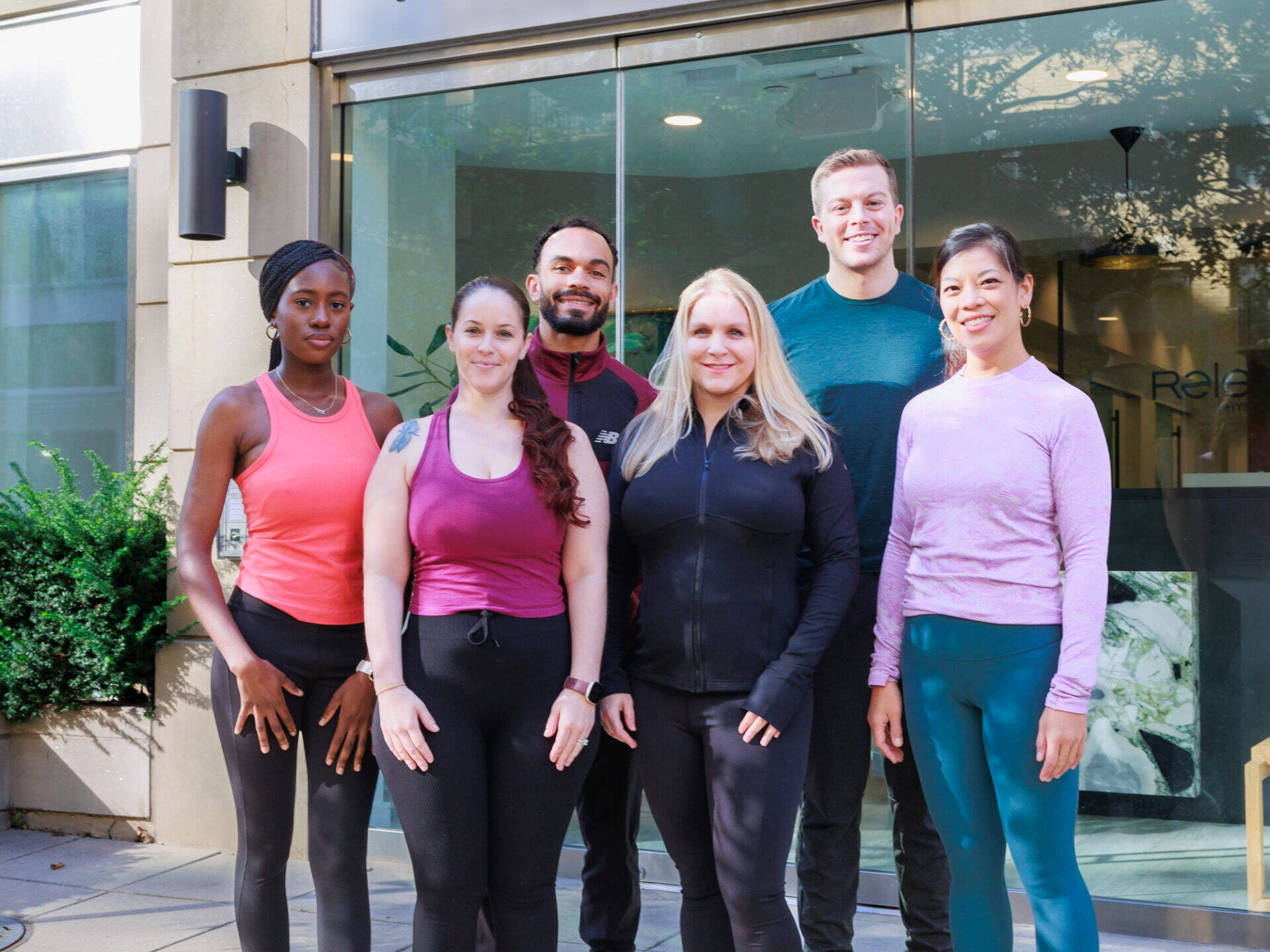
Dr. Cari Simon PT, DPT, CMTPT, ART
Owner & Physical Therapist, Release Physical Therapy Washington, D.C.
Dr. Cari Simon received her Doctorate degree in Physical Therapy from the University of Hartford. A former All-New England and All-State soccer player, she was part of the U.S. Women’s Soccer National Team pool, but ultimately decided to redirect her career in pursuit of her true passion: care. She is now one of the top physical therapists in Washington, DC. As one of the most highly regarded physical therapists in Washington, DC, Dr. Cari Simon’s treatment approach combines manual mobilization and manipulation techniques with individualized therapeutic exercise. She is a full body Active Release Technique (ART) provider. Additionally, Dr. Simon utilizes McConnell, athletic, and Kinesio Taping methods, as well as Trigger Point Dry Needle Therapy. When she is not helping her patients meet their physical goals, Dr. Simon enjoys networking with other physical therapists in Washington, DC, outdoor activities and spending time with her family.
Ethan Gramstad PT, DPT, CMTPT
Physical Therapist, Release Physical Therapy Washington, D.C.
Dr. Ethan Gramstad is the newest addition to the staff at Release Physical Therapy. A native of Virginia, he has recently relocated to Washington, DC following the last two years of practicing PT in Denver, Colorado. He received his Bachelor’s degree from the University of Virginia where he was a member of the UVA Men’s Rowing team for three years. It was that experience that ignited his interest in the science of exercise, as well as physiology and anatomy. He went on to obtain his Doctorate of Physical Therapy from Old Dominion University from Norfolk, Virginia in 2017.
Dr. Gramstad uses manual therapy and mobilization techniques to obtain optimal patient outcomes and places a high priority on establishing a strong patient-therapist relationship. He focuses on assisting his patients in meeting their physical goals and finds satisfaction in the application of individualized exercise programs, as well as dry needling to achieve success. He has previous experience in providing pre and post-operative therapy protocols and treating the outpatient orthopedic population. Besides his rowing days, Dr. Gramstad has personally participated in endurance sports; running Cross Country and multiple marathons and continues to maintain a devotion to a rigorous gym regimen.
Dr. Stephanie Lam PT, DPT, CMTPT
Physical Therapist, Release Physical Therapy Washington, D.C.
Dr. Stephanie Lam received her Doctorate of Physical Therapy from the School of Health Technology and Management at Stony Brook University, after attaining dual degrees in Biology and Psychology from the University of Virginia. She is highly experienced in several fields of adult orthopedics, including post-surgical recovery, acute sports injury rehabilitation, athletic performance improvement, and chronic pain management. She also has a passion for pediatrics and has treated kids of all ages for congenital and developmental issues.
Dr. Lam uses her patient’s individual goals to guide treatment, addressing her patient’s symptomatic impairments while considering their day-to-day ability to function and perform athletic and recreational activities. Dr. Lam incorporates manual therapy throughout her treatments, specializing in extensive deep soft tissue manipulation and mobilizations of the spine and peripheral joints, as well as dry needling.
Deborah Ajala PT, DPT, COMT, CMTPT
Physical Therapist, Release Physical Therapy Washington, D.C.
Dr. Deborah Ajala is an astute physical therapist who takes her time to get to know her patients in order to provide the best possible care. Dr. Ajala’s lifelong passion for caregiving led her to a career in physical therapy. She received a Bachelors degree in Health Sciences with a minor in Exercise Science and Wellness Management from the University of Sciences in Philadelphia, where she obtained a Doctorate in Physical Therapy thereafter. Dr. Ajala holds certifications in Orthopedic Manual Therapy (COMT) and Trigger Point Dry Needling (CMTPT). Her goal with each patient is to optimize their return to function.
Dr. Ajala previously worked at an Outpatient Physical Therapy Clinic in Maryland as a staff clinician. There, she served a diverse patient population treating a wide range of orthopedic conditions including sports medicine, pre/post operative rehabilitation, overuse injuries and several others.
In her free time, Dr. Ajala enjoys spending time with her family and friends, reading, and sports. She also enjoys exploring new DC neighborhoods and is a restaurant enthusiast.
Mia Smyser PT, DPT, COMT, CIDN
Physical Therapist, Pelvic Floor Therapist, Release Physical Therapy Tysons and Washington, D.C.
Dr. Mia Smyser is a native of the DMV. She received her Doctorate in Physical Therapy from the University of Miami, after receiving her Bachelors of Science in Exercise Science from the University of South Carolina. She thinks movement is of foundational importance and is dedicated to improving people’s mobility and function and helping them achieve their optimal physical well-being.
She is passionate about continuing to learn and grow in the profession. She is a Certified Orthopedic Manual Therapist (COMT), certified in Integrative Dry Needling and is continuing her coursework with Herman & Wallace as a pelvic health therapist.
Dr. Smyser previously worked at outpatient physical therapy clinics in Washington, DC and Falls Church, VA, treating a wide variety of conditions including sports medicine, pelvic health, pre/post-operative rehabilitation, and pediatrics, among others.
In her free time, she prioritizes spending time with her husband, son & dog; playing soccer and running; coaching HIIT and checking out new restaurants.
Paul Miller LMT
Massage Therapist, Release Physical Therapy Washington, D.C.
Paul Miller is a dedicated massage therapist with expertise in medical massage, deep tissue therapy, and myofascial release. Paul customizes each session to meet the unique needs of his clients, focusing on relieving tension, restoring mobility, and enhancing overall physical well-being.
Trained at the Northern Virginia School of Therapeutic Massage, Paul has also completed all three of Howard Rontal’s Myofascial Release courses, further refining his ability to address chronic pain and movement restrictions. His approach is rooted in the belief that targeted, intentional bodywork can be a transformative tool for recovery and long-term health.
Release Physical Therapy Treatments
Our experienced physical therapists have advanced training in outpatient orthopedic physical therapy. Our physical therapy services include sports therapy, injury rehabilitation, pre-surgical therapy, post-surgical therapy, chronic pain management, as well as wellness and prevention. Specialized treatments at Release Physical Therapy include:
Shockwave Therapy
A non-invasive medical treatment that utilizes acoustic waves to treat various musculoskeletal conditions and promote healing.
K-Laser Therapy
The use of specific wavelengths of light to improve healing time, pain reduction, increase circulation and decrease swelling.
Dry Needling Washington DC
Needle treatment that decreases pain, increases range of motion and improves strength by inactivating myofascial trigger points.
Active Release Technique in Washington, D.C.
Massage and movement-based technique that treats problems with muscles, tendons, ligaments, fascia and nerves.
Therapeutic Medical Massage
Reduces muscular pain and inflammation, relaxes overused muscles, improves posture and movement awareness, and enhances performance.
BFR Training Washington DC
Rehabilitation therapy and performance training technique using a personalized tourniquet system to reduce atrophy and increase strength.
Kineseo® Taping Method
Reduces muscular pain and inflammation, relaxes overused muscles, improves posture and movement awareness, and enhances performance.
Running Assessment Washington DC
Individualized analysis designed to identify strength, gait, and alignment imbalances to prevent injury and improve your current training program.
Functional Training
Exercise regimens that integrate multiple muscle groups, joints and the brain to assist in everyday movement, physical activities and athletics.
Graston Technique
Instrument-assisted soft tissue mobilization used to address soft tissue lesions and fascial restrictions resulting in improved patient outcomes.
Release Physical Therapy Services
At Release Physical Therapy, we treat you with our hands, not just machines. We offer a full range of manual therapies, as well as both traditional and non-traditional techniques for the best in comprehensive care. We work one-on-one with our patients to develop an individualized treatment plan that meets their unique needs, conditions, wellness goals and fitness levels.
Physical Therapy Treatment for Pelvic Floor Issues
At Release Physical Therapy, our experienced therapists conduct a thorough assessment to identify the underlying causes of your pelvic floor issues and create a personalized treatment plan to promote healing and alleviate the problems you’re experiencing.
Physical Therapy Treatment for Upper Back/Shoulder Pain
At Release Physical Therapy, our experienced therapists perform comprehensive assessments to see how they can help with your upper back pain. We then design individualized treatment plans aimed at promoting healing and relieving your specific issues.
Physical Therapy Treatment for Lower Back Pain
At Release Physical Therapy, our seasoned therapists perform comprehensive assessments to pinpoint the root causes of your lower back pain problems. We then design individualized treatment plans aimed at promoting healing and relieving your specific issues.
Physical Therapy Treatment for Knee Pain
At Release Physical Therapy, our seasoned therapists perform comprehensive assessments to pinpoint the root causes of your knee pain problems. We then design individualized treatment plans aimed at promoting healing and relieving your specific issues.
Physical Therapy Treatment for Ankle Pain
At Release Physical Therapy, our experienced therapists conduct thorough assessments to identify the underlying causes of your ankle discomfort. From there, we craft personalized treatment strategies tailored to foster healing and alleviate your unique concerns.
Physical Therapy Treatment for Tennis Elbow Pain
At Release Physical Therapy, our seasoned therapists perform comprehensive assessments to pinpoint the root causes of your tennis elbow pain problems. We then design individualized treatment plans aimed at promoting healing and relieving your specific issues.
Physical Therapy Treatment for Arthritis
At Release Physical Therapy, our expert therapists conduct thorough assessments to gain insight into your arthritis symptoms. With this understanding, we craft personalized treatment strategies aimed at promoting healing and addressing your unique requirements.
Release Physical Therapy Location & Hours
Visit us at our convenient West End Washington DC location. We pride ourselves on providing the highest level of care and convenience to our patients. Our appointment times flexible – let us know how we can best accommodate you.
Release Physical Therapy - Washington DC
2134 L St NW
Washington, DC 20037
Get Directions
Location Hours
Mon - Thurs: 6:00am - 8:00pm
Fri: 6:00am - 5:00pm
Sat - Sun: Closed
Now Accepting New Patients
Feel Your Very Best
Whether you’re an athlete that plays hard on the field, or a weekend warrior that plays hard in life, committing to a physical therapy program can help to keep you moving forward.
Latest Blog Posts
Follow us on Instagram!
Error: No feed with the ID 2 found.
Please go to the Instagram Feed settings page to create a feed.













